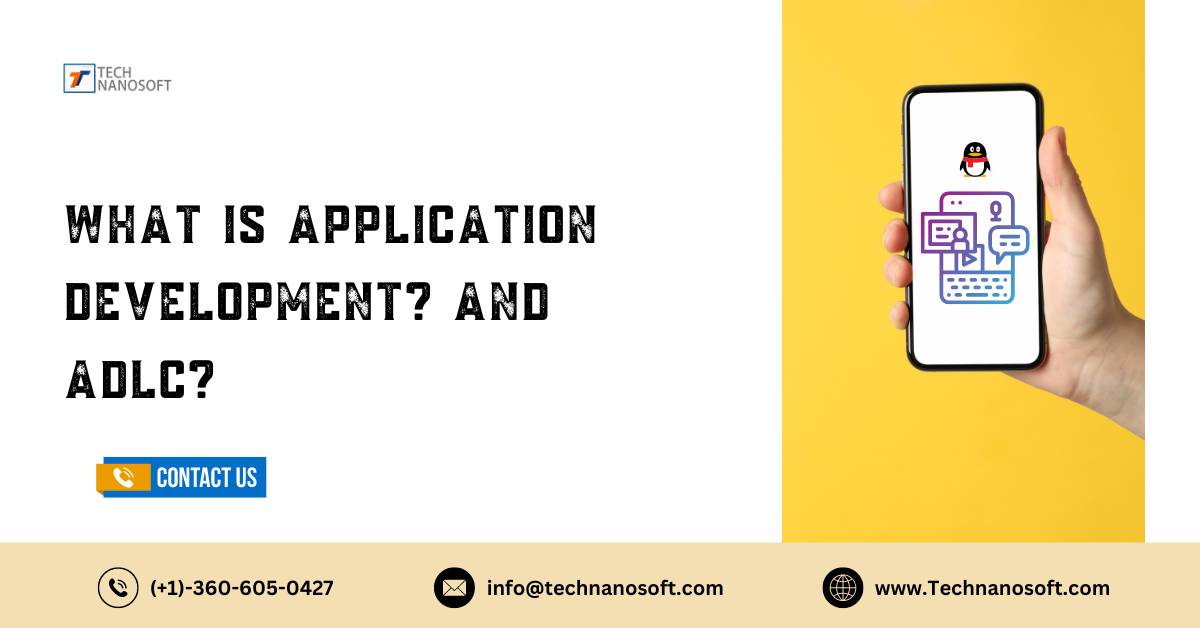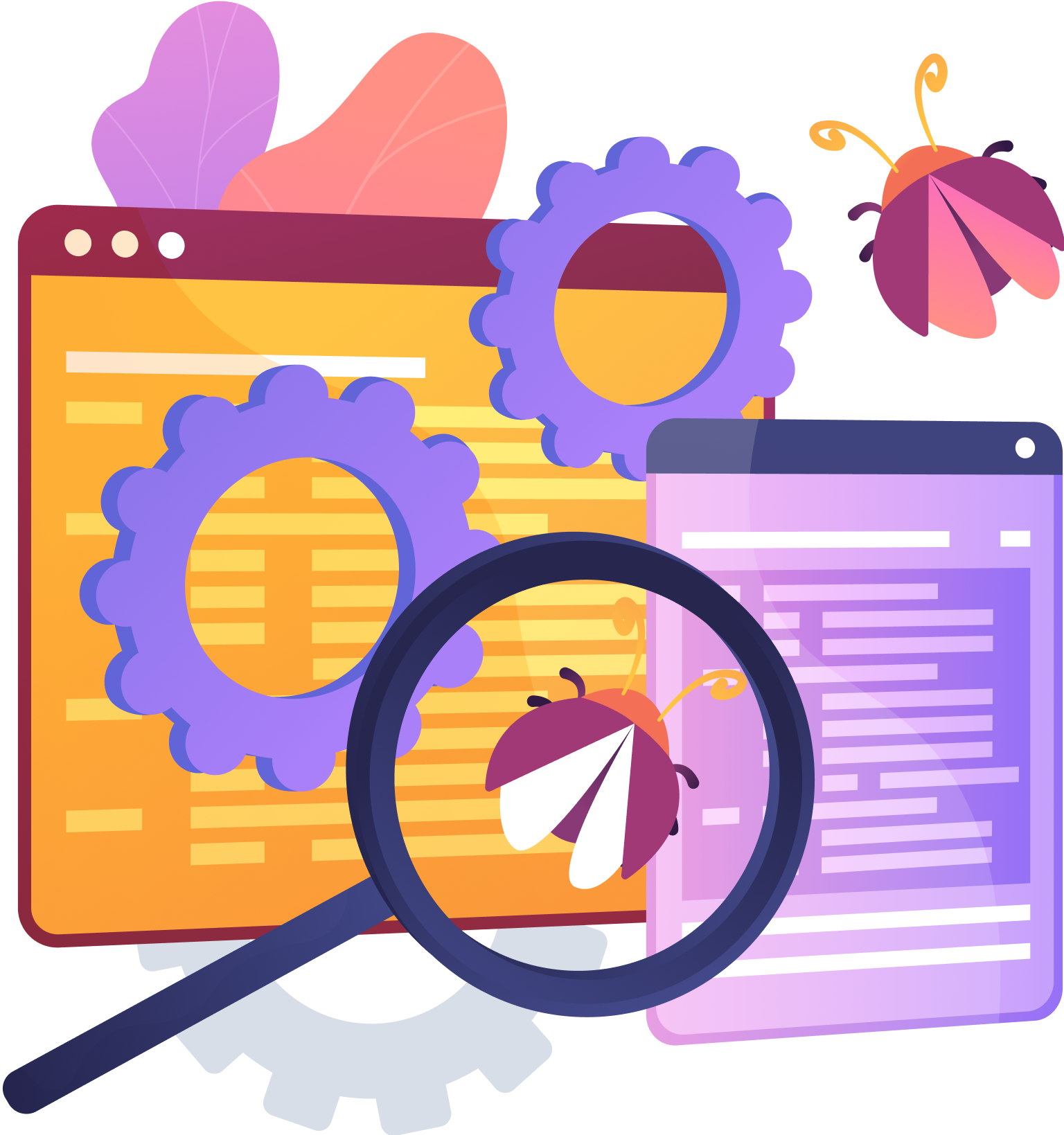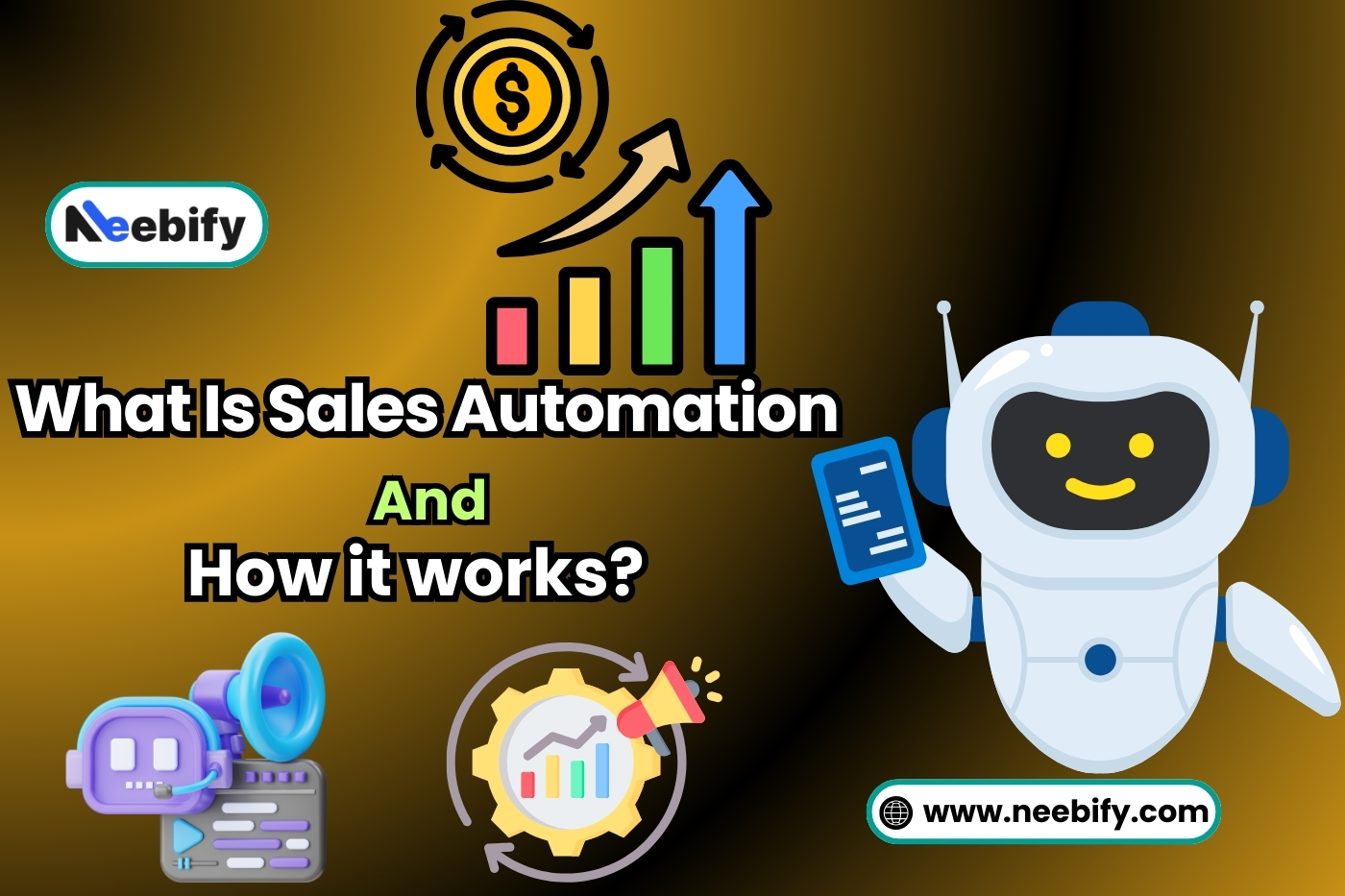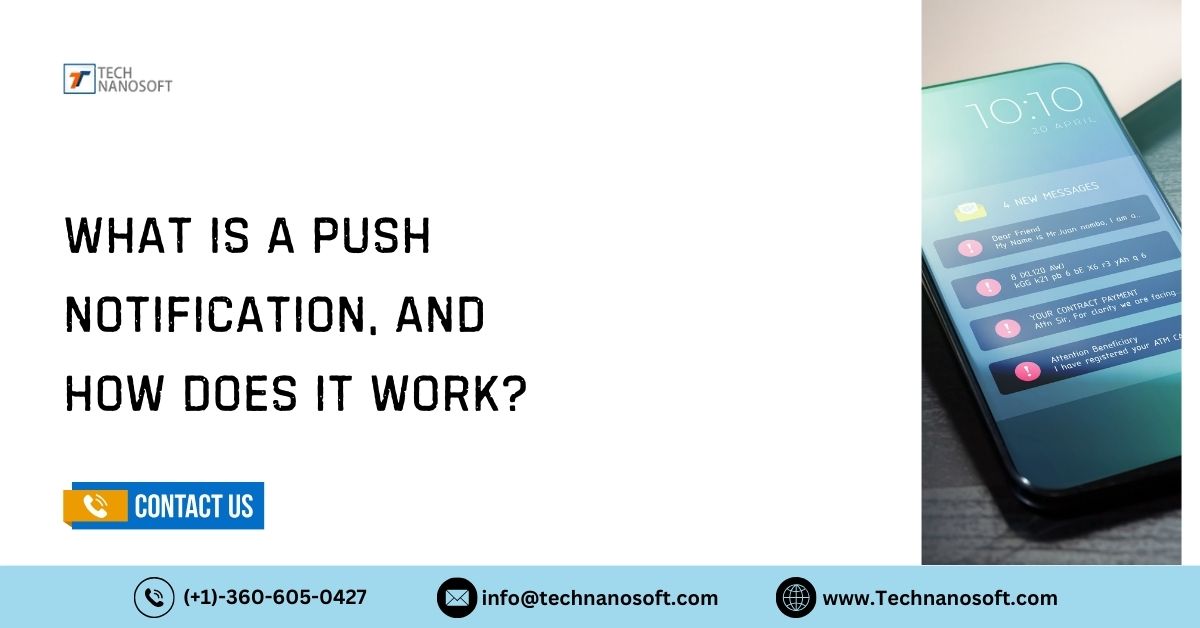What is application development? And ADLC?

In today's digital world, app development involves planning, creating, testing, and releasing software applications in an organized manner. This method uses coding languages, frameworks, and tools in a complex way on various platforms such as desktop, online, and mobile.
Its primary goal is to perfectly satisfy each user's specific needs while blending them with the strategic goals of companies. Application development strives to create customized solutions that not only meet but also beyond expectations by balancing technological acumen with user-centricity. As a result, it plays a crucial role in influencing the digital experiences of the future.
What is Application Development?
Developing software for computers, the internet, and phones is known as application development. It involves designing, testing, and releasing the software. Developers use programming tools like languages and frameworks to create solutions that meet user needs and organizational goals.
Creating custom applications through application development enhances user experiences and boosts corporate success by blending technology and user-friendly design. Businesses can succeed in the digital market by combining technology with customer needs. This helps them adapt to changes and thrive.
What Makes Application Development Important?
In today's digital world, making apps is important. It helps people and companies make custom solutions for specific needs and challenges. Organizations may obtain a competitive edge in the market, increase productivity, improve user experiences, and expedite procedures by creating custom applications.
Furthermore, application development stimulates innovation by enabling the development of distinctive features and functionalities that meet changing customer needs. In today's tech-driven environment, it is crucial for promoting success, productivity, and growth.
The Advantages of Application Development for Businesses
Improved Productivity
Application development centralizes operations, automates jobs, and streamlines processes to transform corporate operations. Increasing production greatly and optimizing workflow are the results. Through the elimination of manual procedures and the reduction of redundant tasks, firms may optimize resource use. Teams can focus on important tasks because of efficiency, leading to innovation and growth within the company.
Improved Customer Experience
Delivering individualized experiences based on each customer's unique preferences requires the use of customized applications. Applications increase user pleasure, loyalty, and engagement by combining intuitive interfaces, friction less navigation, and tailored content. When customers feel valued and heard, it strengthens relationships, keeps clients coming back, and helps the business grow.
Cost Savings
Application development plays a key role in resource allocation optimization, overhead cost reduction, and operational efficiency. Businesses can significantly lower their operating costs by centralizing operations, automating procedures, and getting rid of human labor. Specialized applications help companies use resources efficiently, reduce waste, and save money. Cutting costs helps the company stay financially stable, invest in growth opportunities, and remain competitive.
Competitive Advantage
Customized apps give companies a special selling point that sets them apart from rivals. Businesses stand out by offering innovative features, great user experiences, and personalized solutions to attract and retain customers. Businesses can stay ahead by being competitive and adapting to market changes, leading the market and outperforming competitors. Businesses can stay ahead in the market by constantly improving their products and listening to what customers need.
Data-focused Decision Making
Application development makes it easier to gather, analyze, and use data to support well-informed decision-making. By adding data analytics and reporting to apps, companies can better understand consumer behavior, industry trends, and operational efficiency.
Businesses can grow, improve operations, and make decisions using current data with this data-driven approach. In today's changing market, organizations can stay competitive, responsive, and agile by utilizing data. This helps them stay ahead of the curve and satisfy changing client needs.
What Kinds of Application Development are There?
Web Application Development
Web applications are programs that servers run and users can access through web browsers, not install on devices. They work on many internet devices. They can be used on different platforms. This is because they are made with languages like HTML, CSS, and JavaScript.
Users can easily access the program from anywhere with internet, making it convenient and flexible for them. Web apps are important for modern digital experiences. They offer users interactive features and help businesses engage with their audience, leading to increased online visibility and success.
Mobile Application Development
Developers specifically make mobile applications for tablets and smartphones, which are examples of mobile devices. They fall into three primary categories:
Native Apps: Native apps are made for specific platforms like iOS or Android. They use languages like Java/Kotlin for Android and Swift/Objective-C for iOS. By using all the device's hardware and software features, they provide a smooth user experience and performance.This attention to detail guarantees excellent performance and seamless interaction with the platform. The result is a responsive and feature-packed application that adheres to the platform's guidelines and preferences.
Hybrid Apps: Hybrid apps mix web and native tech using HTML, CSS, and JavaScript in a native container for the best features. They can use one codebase on multiple platforms, making development cheaper and faster. Companies can use technologies like Ionic, Cordova, and React Native to make hybrid apps. These apps can use native features and reach more people, while still giving users a consistent experience on different platforms.
Progressive web apps: Using current web technologies and Application Programming Interface, Progressive Web Apps (PWAs) provide a native app-like experience via web browsers. They improve accessibility and user engagement by providing push notifications, offline functionality, and quick loading times. Installable on the user's device, PWAs preserve the benefits of web-based accessibility while looking and acting like native apps. This strategy helps companies create engaging experiences for customers on different platforms and devices by combining web and native apps.
Desktop Application Development
Desktop programs operate locally on users' PCs and provide a stable and feature-rich experience. Programs are written in languages like Java, C#, or C++.
They are optimized for Linux, Windows, and macOS to provide smooth operation and compatibility. Desktop programs are better than web apps because they can do more and work without internet. They are great for tasks that need a lot of processing or local resources.
Windows application As an illustration: You can capture videos of your computer screen with the Windows application iFun Screen Recorder. Its many functions make screen recording and editing easy.
Development of Enterprise Applications
Enterprise applications like project management, CRM, and ERP systems cater to businesses' specific needs. These apps help businesses by organizing rules and connecting with databases, ensuring smooth operations for different departments. Enterprise apps help businesses work better by making tasks easier, improving teamwork, and aiding in decision-making for increased productivity.
Cloud Application Development
Cloud applications provide scalability, flexibility, and cost-effectiveness by utilizing cloud computing resources and services. These apps were made using cloud technologies like serverless computing, microservices, and containers.
They use the cloud to be more reliable and perform better. Cloud apps make it easy for organizations to adapt to changing demands by providing resources as needed. They also eliminate the need for on-site infrastructure.
Game Development
Developing games involves making interactive experiences for different platforms like consoles, PCs, mobile phones, and web browsers. It requires specific knowledge in a variety of fields, including audio engineering, physics simulation, graphics programming, and game design. Game developers use game engines such as Unity or Unreal Engine.
They use these engines to create games with exciting gameplay, stunning graphics, and immersive storylines. This helps them fulfill their creative goals. Game production demonstrates ingenuity and inventiveness in the digital entertainment sector, from independent games to blockbuster releases.
IoT (Internet of Things) Application Development
IoT applications are transforming a variety of industries, including manufacturing and healthcare, by enabling communication and interaction between linked devices, sensors, and actuators. These programs, which were created to gather, examine, and handle data from Internet of Things devices, make it easier to automate, monitor, and manage environments and physical systems. To create safe and effective communication between devices, IoT developers use technologies like MQTT, CoAP, or LoRaWAN. This guarantees smooth integration and compatibility throughout the IoT ecosystem.
What is Application Development Life Cycle?
Planning and Examining
App development starts with careful planning and research, which includes identifying the project objectives, target audience, and key features. Developers can create a customized strategy by researching customer preferences and market trends, which provides them with useful insights. Establishing project scope, budget, and schedules guarantees a successful outcome. This fundamental stage establishes the basis for a powerful and purpose-driven application by coordinating company goals with user expectations.
Design and Prototyping
Concepts come to life through design and prototyping, which turns intangible ideas into aesthetically beautiful and intuitive user interfaces. Designers painstakingly create wireframes and mockups, polishing the user experience through iterative design cycles. User feedback is incorporated to guarantee smooth interaction and navigation. The aim is to create attractive designs that attract users, increase interaction, and lay the groundwork for a memorable app experience.
Code Development
The foundation of app development is code, where programmers use frameworks and programming languages to give designs life. Version control expedites development procedures, while collaborative coding techniques guarantee code quality and scalability. Developers construct a solid application architecture by carefully integrating backend and frontend features. We focus on creating efficient code for smooth and safe operation, laying a strong foundation for the application's abilities.
Testing and Optimization
QA engineers carefully examine the application during testing and optimization to look for flaws and performance problems. The app is tested in various settings and on different devices. Strict methods such as user testing and unit testing are used to ensure that it functions properly.
Ongoing improvement improves compatibility and user experience by fine-tuning performance. The main goal is to create a flawless user experience for the app. This will help make the app successful in the competitive digital market. This means ensuring there are no bugs in the app.
Release and Maintenance
Creating an app involves releasing it and maintaining it, where developers put the app into use in real-life situations. Testing, monitoring, and maintenance ensure a smooth transition. Bug fixes and upgrades keep the app relevant and long-lasting.
Developers make sure the app is responsive and resilient, adapting to changing user needs and technical improvements, all while keeping stability, security, and user pleasure at the forefront of their minds. This phase emphasizes the dedication to providing consumers with a dependable and flawless app experience.
Examples of Application Development
Marketing Apps
With the help of marketing applications, companies can manage campaigns and engage audiences more effectively. These apps often provide services like managing customer contacts, sending emails, tracking analytics, and scheduling social media posts. Businesses can increase productivity, monitor performance indicators, and fine-tune their marketing strategy for optimal effect and return on investment by consolidating all marketing-related tasks into a single platform.
Inventory Management Apps
Businesses can measure, manage, and optimize their inventory levels and supply chain activities with the help of inventory management apps. Typical features of these apps include order management, supplier management, barcode scanning, and real-time inventory tracking. Businesses may increase inventory accuracy, lower stockouts, and streamline their supply chain management for greater productivity and profitability by digitizing inventory procedures and automating jobs.
Collaboration Apps
Collaboration applications provide smooth communication and cooperation amongst team members, regardless of their geographical dispersion or presence in the same office. Features like file sharing, task tracking, project management, and chat are frequently included in these programs. Businesses may increase team productivity, promote improved communication, and expedite project workflows for increased efficiency and cooperation by offering a single platform for collaboration.
Project Management Apps
Apps for project management function as a central location for organizing, arranging, and carrying out tasks, projects, and workflows. Task assignment, milestone tracking, Gantt charts, and team collaboration tools are among the features that these apps usually provide. Businesses may enhance project transparency, expedite communication, and guarantee on-time and budget project completion for effective project management and delivery by giving visibility into project progress and deadlines.
Apps for HRMS
HRMS apps make HR tasks easier by managing payroll, performance, onboarding, and recruitment processes in one system. These apps help with tracking time, managing leave, self-service portals for employees, and tools for performance reviews. Businesses can improve HR efficiency, employee satisfaction, and legal compliance by automating HR tasks and offering self-service options to employees.
Expense Tracking Apps
Apps for tracking expenses offer organizations an easy way to keep track of and manage their spending, receipts, and reimbursements. Typical features of these apps include mileage monitoring, expense classification, scanning of receipts, and reporting capabilities. For improved financial management and compliance, firms can enhance expense visibility, limit expenses, and optimize reimbursement workflows by digitizing expense tracking procedures and automating expense management chores.
Application Development Future
The future of app development is full of exciting opportunities and significant changes. These changes will continue to shape the digital world as technology advances. The evolution of technology will bring about continuous improvements in app development.
Integration of AI and Machine Learning
The merging of artificial intelligence (AI) and machine learning (ML) technologies will completely transform application development. This will help make smart apps that can learn, analyze data, and make quick decisions.
Virtual Reality (VR) and Augmented Reality Experiences
AR and VR technology will drive the growth of immersive and interactive apps in the future. They will create realistic experiences that blend the real and virtual worlds. These experiences range from virtual shopping to immersive training simulations.
Progressive Web Applications (PWAs)
Progressive Web Applications (PWAs) are becoming popular by blending web accessibility with native app features for better development. PWAs are great for companies wanting to reach more customers with a reliable and engaging user experience. They provide push notifications, offline access, and smooth user experiences across different platforms.
Edge Computing and IoT Integration
More companies are using IoT devices and experiencing growth in edge computing. Applications will be developed to process data closer to where it is collected. This helps to decrease delays and enhance performance. This reduces delays and improves performance.
Edge computing will make it possible for creative applications to give real-time insights and actionable intelligence for improved efficiency and decision-making, from smart home gadgets to industrial IoT solutions.
Development Across Platforms and Containerization
Development teams can easily create and launch apps on multiple platforms using containerization technologies and cross-platform development frameworks. Developers can make development and deployment easier by using containerization technologies like Docker and Kubernetes. These technologies ensure programs are consistent, scalable, and portable, optimizing efficiency and resource utilization.
Data privacy and cybersecurity
User data and defend against changing cyberthreats, developers will give top priority to putting strong security mechanisms, encryption protocols, and compliance frameworks in place. This will ensure confidence, dependability, and compliance in the digital ecosystem.
Serverless Architecture and Microservices
Microservices and serverless architecture will remain popular as scalable and economical methods of developing applications. With serverless platforms such as AWS Lambda and Azure Functions, developers can decouple components of an application into modular services and create highly scalable, resilient, and economical applications that can be adjusted to meet changing business needs and workloads.
Natural Language Processing (NLP) and Voice
The growth of conversational interfaces and voice-enabled apps will be fueled by the convergence of natural language processing (NLP) and voice recognition technology. Voice and natural language processing (NLP) technologies will facilitate natural and intuitive interactions, improving user engagement and accessibility and creating new avenues for personalized and context-aware applications. These applications range from virtual assistants to voice-controlled smart gadgets.
Advanced Technologies and Quantum Computing
A new age of application development will be ushered in by the introduction of quantum computing and other cutting-edge technologies, which will make it possible to achieve breakthroughs in computational capacity, data processing, and algorithmic optimization. Because quantum computing can handle complex problems tenfold quicker than classical computers, it will open up new avenues for tackling scientific simulations, complex optimization issues, and cryptography. These developments will lead to disruptive applications across a wide range of industries.
Continuous Deployment and Integration (CI/CD)
The use of continuous integration and deployment (CI/CD) techniques will become commonplace in application development, allowing programmers to deliver new features and software updates in a timely, dependable, and effective manner. Continuous Integration/Continuous Release (CI/CD) pipelines improve development workflows, shorten time-to-market, and foster team collaboration by automating build, test, and deployment procedures. This guarantees the quick and iterative release of high-quality software in response to shifting user requirements and market demands.
READ ALSO- Composite Application Framework In App Development
Three Types of Application Development Approaches
Waterfall Development
The process of waterfall development is linear; that is, every stage of the project, including design, development, testing, and deployment, happens one after the other. This approach places a strong emphasis on careful planning and documentation up front, guaranteeing a solid grasp of the project needs prior to moving on to the following stage.
projects well defined and stable requirements. Still, its inflexible nature might make it difficult to adjust to changing requirements or input during later stages. Nevertheless, it does provide clarity and structure.
Rapid Development of Applications (RAD)
The goal of rapid application development (RAD), an iterative and dynamic methodology, is to produce working prototypes more rapidly. This approach places a strong emphasis on cross-functional teamwork, quick prototyping, and regular iterations based on user input. RAD prioritizes speed and flexibility, which allows for early concept validation and a shorter time-to-market. This helps to ensure that the final product effectively satisfies customer needs.
Agile App Development
Agile app development is a flexible, iterative process that emphasizes client collaboration, continuous improvement, and adaptive planning. This approach places a strong emphasis on releasing functional software in manageable chunks that enable regular input and modifications as the project progresses. Agile teams put the needs of their clients first and react fast to changing demands, making sure that the finished product successfully satisfies changing user expectations. Agile is appropriate for projects with changing requirements and dynamic business contexts because of its iterative nature, which fosters transparency, cooperation, and adaptation.
How Can Technanosoft Elevate Your Mobile App Development Journey?
Technanosoft is your strategic partner to deliver cutting-edge mobile app development solutions. Our skilled staff uses the newest technology to create custom apps that meet your company's goals. We guarantee user-friendly interfaces for maximum user engagement by putting a strong emphasis on user-centric design. Technanosoft provides cross-platform solutions that are efficient, whether you need native apps for iOS or Android devices.
By using an agile methodology, we ensure quick adaption and flexibility. You can rely on us for complete support, from specialized development to painstaking testing, to make sure your app succeeds in the ever-changing digital market.
FAQs about Application Development
Q.1- Can I Develop .NET Core Applications in VS Code on Mac?
A- Yes, you can use VS Code on a Mac to create.NET Core applications. To enable Core development and facilitate the construction, debugging, and deployment of apps, install the required extensions and tools.
Q.2- How to Develop Android Applications?
A- Create Android apps by configuring your system, studying Kotlin or Java, creating the user interface, coding the functionality, testing on emulators and hardware, and uploading them to the Google Play Store.
Q.3- How to Develop Web Applications?
A- Create web applications by selecting a framework, configuring your system, creating the user interface, writing the front- and backend code, testing, and deploying to a server or hosting platform for efficiency and accessibility.
Q.4- What Kinds of Web Applications Are There?
A- Web applications, such as e-commerce platforms, social networking sites, content management systems (CMS), online banking systems, and customer relationship management (CRM) tools, can be divided into several sorts according to their functions and purposes.
Q.5- Which programming languages are utilized in the creation of websites?
A- Popular programming languages for web development are Python, Ruby, PHP, and Java for backend development, and HTML, CSS, and JavaScript for frontend development. Furthermore, libraries and frameworks like as React, Angular, and Node.Development procedures can be streamlined by using JavaScript.
Q.6- What Advantages Do Progressive Web Apps (PWAs) Offer?
A- Progressive Web Apps (PWAs) have a number of advantages, such as improved cross-platform compatibility, faster loading times, offline functionality, and an improved user experience. PWAs are an affordable and effective option for companies looking to expand their customer base since they use contemporary web technologies to create experiences that are similar to apps yet are directly accessible through web browsers.









